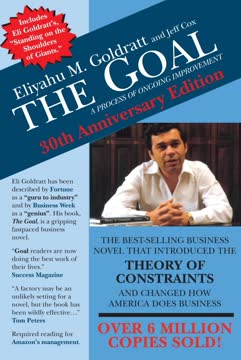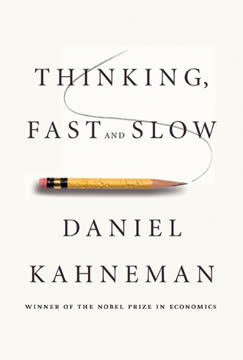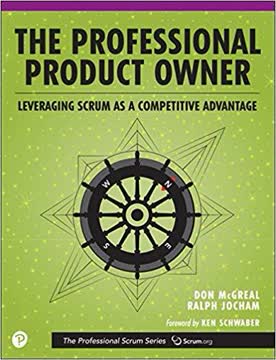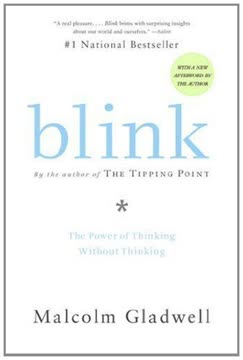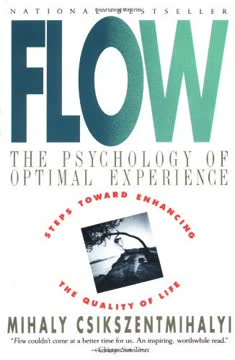重点摘要
1. 精益思维旨在以更少的浪费创造更多的价值
“精益必须包括所有这些:它们不能单独运作。我们需要将所有目标、方法、技术和基础要素结合起来使用。”
价值创造至关重要。 精益思维专注于在所有流程中最大化客户价值,同时最小化浪费。这需要一种整体的方法,结合各种工具和技术:
- 识别并消除七种浪费:过度生产、等待、运输、过度加工、库存、动作和缺陷
- 实施拉动系统,以使生产与客户需求对齐
- 标准化工作,以确保一致性和效率
- 持续改进(改善)以不断优化流程
目标不仅是降低成本,更是提升整体价值创造。这意味着改善质量、缩短交货时间,并提高灵活性,以更好地满足客户需求。
2. 目标、流程和人员是精益转型的核心支柱
“目标总是有这两个方面:你需要做得更好以满足客户,以及你需要做得更好以生存和繁荣。”
对齐至关重要。 成功的精益转型需要清晰的组织目标、精心设计的流程和积极参与的人员:
- 目标:定义客户和组织的价值含义
- 流程:设计和优化价值流,以高效地交付该价值
- 人员:激励和赋权员工持续改进流程
组织必须首先明确其目标——无论是客户满意度还是组织成功。这为流程改进提供了方向,并激励员工贡献他们的想法和努力。没有这种对齐,精益举措可能无法实现可持续的结果。
3. 价值流和流动对于优化流程至关重要
“任何活动中的价值——商品、服务或某种组合——始终是一个过程的最终结果(为外部客户设计、制造和服务,以及为内部客户的业务流程)。”
可视化整个流程。 价值流图是理解和改善材料和信息流动的强大工具:
- 识别从开始到结束的所有步骤
- 区分增值活动与非增值活动
- 消除浪费,简化工作流
通过绘制当前状态图,组织可以识别瓶颈、冗余和改进机会。目标是创建一个未来状态图,展示一个更高效、简化的流程,浪费最小化,价值创造最大化。
4. 精益管理需要从垂直思维转向水平思维
“精益管理者关注组织内的价值流,从产品的初始概念和原材料到客户。”
打破孤岛。 传统管理结构通常关注垂直层级和职能部门。精益管理需要根本转变为基于水平的价值流思维:
- 任命负责整个流程的价值流经理
- 鼓励跨职能协作和问题解决
- 将指标和激励与整体价值创造对齐,而不是部门目标
这种转变可能具有挑战性,因为它通常需要改变根深蒂固的组织结构和思维方式。然而,这对于真正优化端到端流程并为客户提供最大价值至关重要。
5. 持续改进和对人的尊重推动精益文化
“参与这一问题解决过程实际上是对人的最高尊重。”
赋权员工。 精益文化建立在两个基本原则之上:
- 持续改进(改善):始终寻求提升流程的方法
- 尊重人:重视和发展各级员工
这些原则是相互关联的。通过尊重人及其想法,组织能够挖掘出丰富的知识和创造力以促进改进。这包括:
- 培训员工掌握问题解决方法
- 鼓励实验和从失败中学习
- 认可和奖励改进努力
- 创建一个安全的环境以分享想法和关切
领导者必须以身作则,创建支持组织内持续学习和改进的系统。
6. 精益原则适用于所有行业,而不仅限于制造业
“我们正在从流程改善转向流动改善,这是一项由一线经理负责的工作,而不是由精益专家以顾问模式运作或位于精益推广办公室。”
拓宽视野。 虽然精益思维起源于制造业,但其原则适用于任何以流程为导向的工作:
- 医疗:改善患者流动,减少医疗错误
- 服务:简化客户体验,减少等待时间
- 办公工作:优化信息流和决策流程
- 政府:提升公共服务,减少官僚主义
关键在于关注理解和改善价值流,无论具体行业或背景如何。这通常需要调整精益工具和概念,以适应每个行业的独特挑战。
7. 精益转型是一个旅程,而不是一个目的地
“持续改进产品和服务以满足社会的目标。”
拥抱持续演变。 精益转型不是一次性的项目或计划,而是一个持续学习和改进的旅程:
- 设定明确的阶段性目标以建立动力
- 庆祝成功,同时始终寻求下一个绩效水平
- 在整个组织中发展精益思维能力
- 适应不断变化的客户需求和市场条件
组织必须抵制在初步改进后宣布胜利的诱惑。追求完美是永无止境的,总有机会进一步提升价值创造和消除浪费。
8. 精益思维通过历史实验和创新不断演变
“福特团队首次在大规模生产中实现了可互换零件、通过将多种技术按工序排列实现单件流、标准化工作和精确可重复的周期时间、原始的拉动系统以供给零件,以及一个极为水平的、以价值流为中心的整个生产过程,最大限度地减少了总交货时间。”
从历史中学习。 精益思维的发展是一个历时数百年的实验和创新过程:
- 威尼斯造船厂(1104年):标准化设计和流动生产
- 福特的高地公园工厂(1914年):流水线和可互换零件
- 丰田生产系统(1950年代):准时制、自动化和持续改进
理解这一历史为现代精益从业者提供了宝贵的背景和灵感。它表明许多核心精益概念有着深厚的根基,并通过无数实验和适应不断完善。
9. 危机可以成为精益转型的催化剂
“幸运的是,泡沫后的经济衰退可以成为精益转型的强大推动力,催生创新的必要性。”
将挑战转化为机遇。 经济危机和商业挑战可以创造出进行精益转型所需的紧迫感和变革开放性:
- 丰田的精益之旅始于1950年的金融危机
- 许多公司在衰退期间采用精益思维以降低成本和提高效率
- 危机暴露了现有流程的弱点,激发了改进的动力
虽然危机并不可取,但它们可以为组织提供强大的动力,促使其质疑长期以来的假设,接受新的思维方式。领导者应准备好抓住这些时刻,作为变革的机会。
10. 精益改进的可持续性需要系统性变革
“如今大多数组织面临的回归问题是对不同层级的优先事项感到困惑,加上未能让任何人对重要价值流的持续表现负责,这些价值流在企业内横向流动。”
解决根本原因。 为了在时间上维持精益改进,组织必须对其管理系统和文化进行根本性变革:
- 将指标和激励与精益原则对齐
- 在各级发展精益领导能力
- 创建持续问题解决和改进的结构
- 将精益思维融入战略规划和决策过程中
许多组织在可持续性方面面临挑战,因为它们仅关注实施精益工具,而未能解决潜在的管理实践和组织结构。真正的精益转型需要一种整体的方法,创造一个持续改进能够蓬勃发展的环境。
最后更新日期:
FAQ
What's Gemba Walks about?
- Lean Principles Focus: Gemba Walks by James P. Womack emphasizes understanding the "gemba," the actual place where value is created, to drive improvement.
- Observation and Learning: The book highlights learning through real-time observation of processes, which can lead to significant insights in lean management.
- Broad Application: Womack extends lean thinking beyond manufacturing to sectors like healthcare and services, showcasing its universal applicability.
Why should I read Gemba Walks?
- Practical Insights: The book offers actionable insights and real-world examples applicable across various industries, enhancing organizational efficiency.
- Expert Guidance: As a leading figure in the lean movement, Womack provides valuable lessons for both new and seasoned practitioners.
- Cultural Shift: It encourages a shift from top-down management to one that values employee engagement and continuous improvement.
What are the key takeaways of Gemba Walks?
- Gemba Importance: Understanding the gemba is crucial for effective management, as it is where work and leadership insights are gained.
- Employee Engagement: Lean management involves engaging with employees and respecting their insights, fostering a culture of collaboration.
- Continuous Improvement: The book advocates for a culture of continuous improvement, regularly assessing and refining processes to enhance value creation.
What is the concept of "gemba" in Gemba Walks?
- Definition of Gemba: "Gemba" means "actual place" in Japanese, referring to where value is created and processes should be observed directly.
- Empirical Learning: Womack argues that true understanding comes from being present at the gemba, allowing leaders to see problems firsthand.
- Value Creation Focus: Observing the gemba helps identify waste and inefficiencies, leading to improved processes and enhanced customer value.
How does James P. Womack suggest implementing lean management?
- Value-Stream Mapping: Womack encourages using value-stream mapping to visualize processes and identify areas for improvement.
- Employee Engagement: Involving employees in the improvement process is crucial, as they provide valuable insights and are closest to the work.
- Continuous Learning: A culture of learning and experimentation is essential, with regular assessments and adaptations based on gemba walks.
What are some common misconceptions about lean management discussed in Gemba Walks?
- Beyond Tools: Lean management is not just about tools; it's a mindset and culture focused on continuous improvement.
- No One-Size-Fits-All: Each organization must adapt lean principles to fit its unique context and challenges.
- Not a Quick Fix: Lean transformation requires sustained effort and commitment, not just a quick solution to operational issues.
How does Gemba Walks address lean in non-manufacturing sectors?
- Broad Application: Womack discusses applying lean principles in sectors like healthcare and services, demonstrating its versatility.
- Case Studies: The book includes examples from various industries, illustrating successful lean implementations outside manufacturing.
- Value Streams Focus: Understanding and mapping value streams is crucial in all contexts to identify waste and improve processes.
What role do "value-stream managers" play in lean organizations according to Gemba Walks?
- Overseeing Value Streams: They are responsible for the entire flow of value for specific product families, aligning processes with customer needs.
- Facilitating Collaboration: Value-stream managers act as liaisons between departments, fostering collaboration to optimize the value stream.
- Continuous Improvement: They identify areas for improvement and lead initiatives to enhance efficiency and effectiveness within their value streams.
What are the best quotes from Gemba Walks and what do they mean?
- "Go see, ask why, show respect.": This quote encapsulates lean management, urging leaders to engage directly with processes and employees.
- "The gemba is where you go to understand work and to lead.": Highlights the importance of being present at the work site for effective leadership.
- "In the absence of value, everything is muda.": Emphasizes focusing on customer value to avoid wasteful activities.
How does Gemba Walks suggest measuring success in lean initiatives?
- Performance Metrics: Establish clear metrics aligned with customer value and organizational goals to evaluate lean initiatives.
- Continuous Improvement: Success involves fostering a culture of continuous improvement, regularly reviewing and adjusting processes.
- Employee Feedback: Gathering insights from employees involved in processes is vital for measuring success and identifying further improvements.
What challenges do organizations face when adopting lean principles as discussed in Gemba Walks?
- Cultural Resistance: Resistance to change from traditional management practices is common, requiring a culture of openness and engagement.
- Misalignment of Metrics: Conflicts between departmental metrics and organizational goals can lead to suboptimal performance.
- Lack of Understanding: Many struggle with understanding lean principles and their application, necessitating ongoing education and training.
How does Gemba Walks address the issue of sustainability in lean practices?
- Continuous Improvement Focus: Sustainability comes from a commitment to continuous improvement, regularly assessing and refining processes.
- Employee Engagement: Involving all employees in the improvement process ensures investment in sustaining lean practices.
- Value-Stream Management: Appointing value-stream managers helps maintain focus on value flow and ensures sustained improvements.
评论
《现场走访》获得了褒贬不一的评价,但总体上反响积极。读者们欣赏沃马克对精益方法论的见解以及他自我反思的写作风格。书籍的结构和简短的文章因其易读性而受到赞扬。然而,批评者指出部分内容的重复性以及在进行现场走访时缺乏具体指导。许多人认为书中提出的精益原则具有价值,特别是强调前往现场、与他人互动以及关注价值流的部分。不过,一些读者在有声书版本中对沃马克的叙述风格感到困惑。
Similar Books
